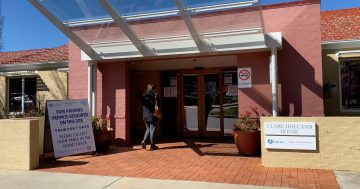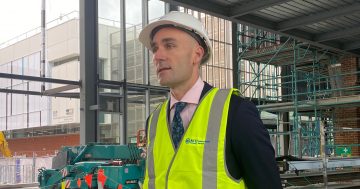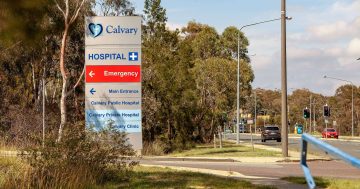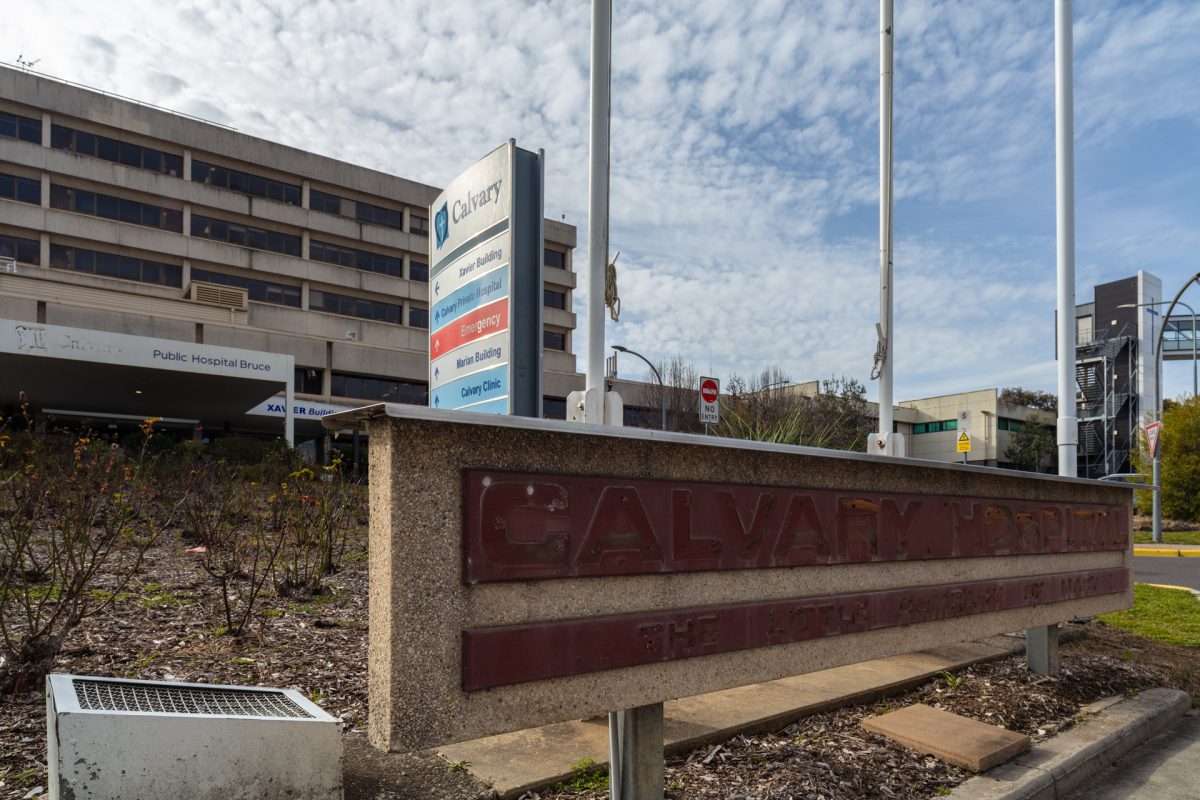
References to Calvary Public Hospital Bruce, along with religious iconography, have been removed from the site, which is now known as North Canberra Hospital. Photo: Thomas Lucraft.
Calvary Public Hospital Bruce is officially in the hands of the ACT Government, but time will tell if the hoped-for benefits of having an integrated public health system will pay off.
Canberra Health Services (CHS) took over operations of the North Canberra Hospital (as it’s known in the interim) at midnight.
It appears the transition of ICT services, such as the Digital Health Record and payroll systems, went off without a hitch, and 1781 staff have successfully moved their employment to CHS.
New North Canberra Hospital general manager Dr Elaine Pretorius said there was a sense of relief the day had finally come.
“You know what it’s like when you’re preparing for an exam and it’s finally here? I think that’s a similar feeling,” she said.
“I think there was sadness yesterday. I think yesterday was a pretty wrenching day for all of us, but today there’s a little bit of a sense of excitement, there’s a sense of ‘thank goodness it’s happened’.”
Iconography, such as the cross on the front of the building, were removed on Sunday (2 July), with other hospital signage and street signs taken down or covered up.
While there had been some criticism for removing Christian symbols on a Sunday, Health Minister Rachel Stephen-Smith said the timing decision had been in the hands of Calvary Health Care.
“There obviously will need to be some changes in signage over time so that consumers don’t get confused about reading ‘North Canberra Hospital’ on a website or an app, and then arriving and finding Calvary signage … but those changes will be made over time, they’re not critical for the delivery of patient care,” she said.
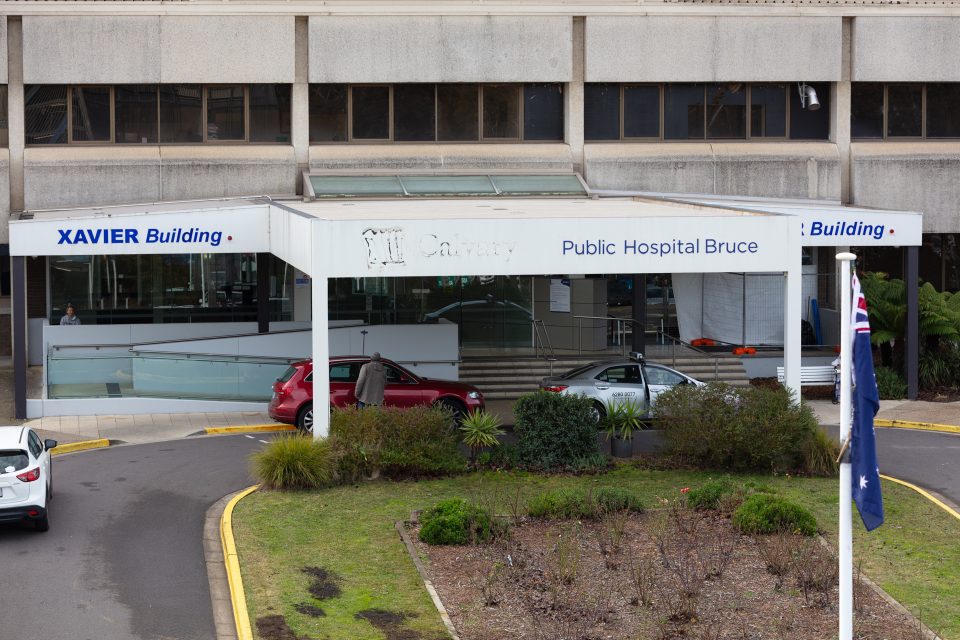
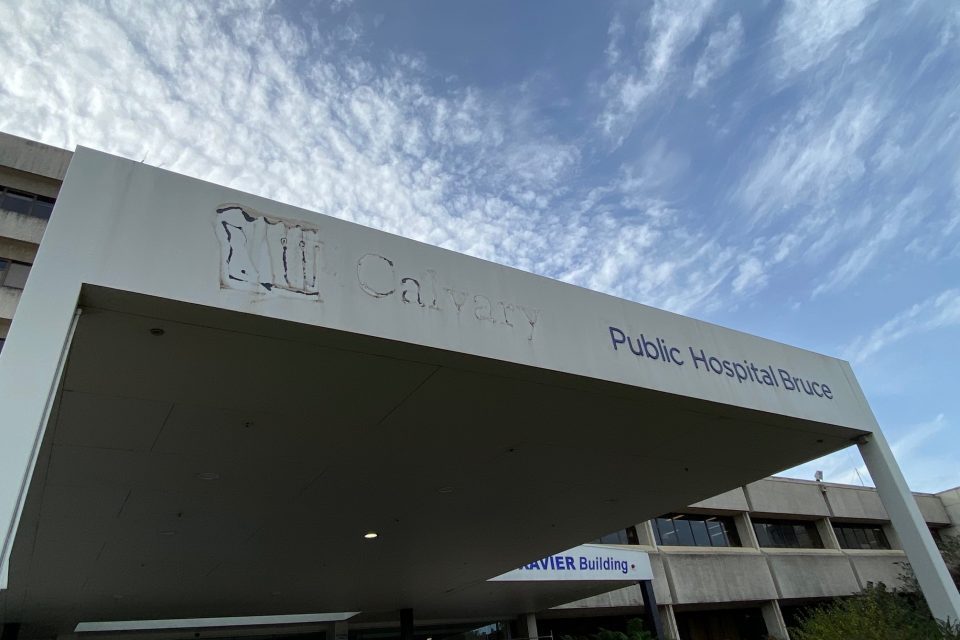
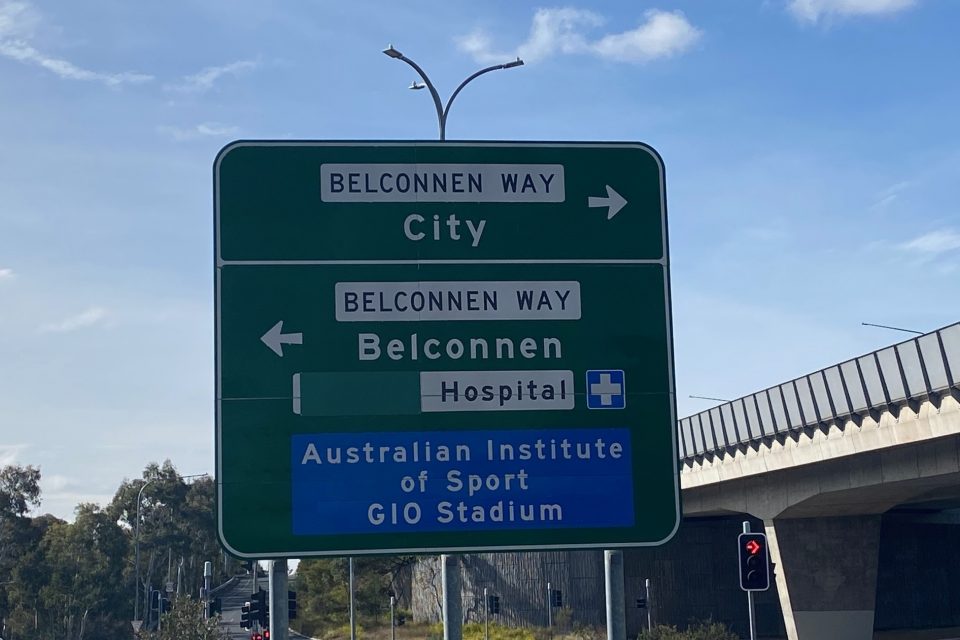

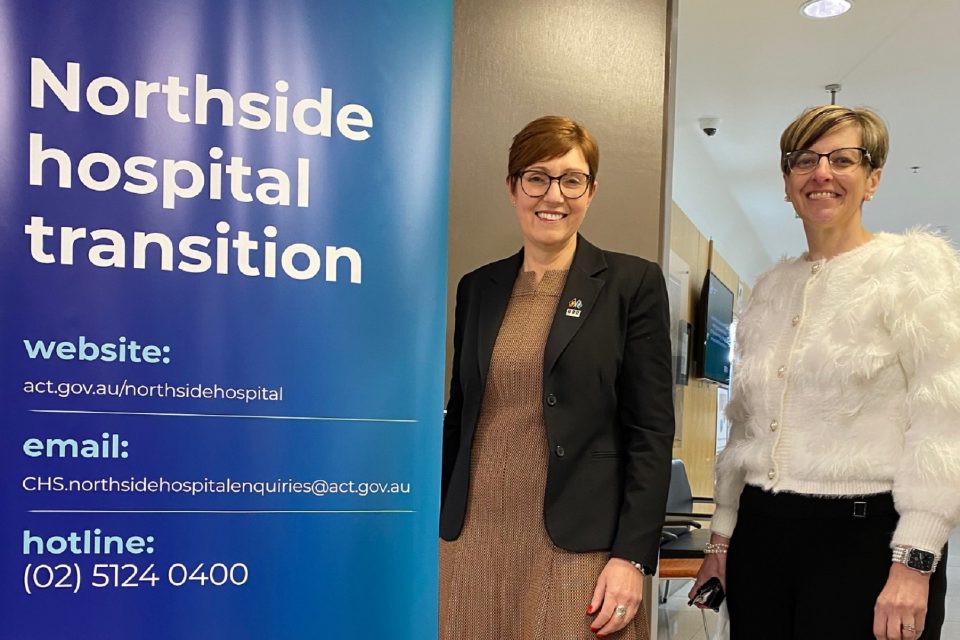
Services that previously had been unavailable at the hospital on religious grounds can now be accessed.
Dr Pretorius pointed out that emergency termination of a pregnancy isn’t available at any Canberra public hospital, and voluntary assisted dying hasn’t been legislated yet.
However, services such as contraception advice and prescriptions could now occur.
She also said only a “tiny fraction” of staff weren’t transitioning, so there were no rostering gaps for the next few weeks.
“We have one or two spots that we’ll have to be thinking about in the next month or so, but for the first two weeks, we’re pretty confident that services will continue uninterrupted,” Dr Pretorius said.
Calvary national CEO Martin Bowles and ACT regional CEO Ross Hawkins penned an open letter to Canberra staff and patients who had used Calvary Public Hospital Bruce since it opened its doors in 1979 and Clare Holland House since 2001.
In it, they detailed staff had delivered more than 55,000 babies, provided critical care at its emergency department, and helped people “achieve dignity, comfort and maximise quality of life” as they entered palliative care for their final days.
“Calvary Public Hospital Bruce and Clare Holland House are much more than bricks and mortar,” the letter stated.
“Calvary’s achievements are a reflection of their compassionate commitments, and all staff should be incredibly proud of their legacy in public healthcare in the ACT.
“To those who are transitioning to their new workplace in public health, we wish you all the best and look forward to continuing to work with you when our services interact at Calvary’s Bruce Private Hospital, John James Hospital, Haydon Residential Aged Care and our home care services,” the letter ended.
Ms Stephen-Smith said only a “very small handful” of Clare Holland House staff had chosen not to transition to CHS.
The official acquisition date is just the start, with conversations to continue with Calvary Health Care for the coming months as transitioning of non-critical issues for operations begins.
CHS is still speaking with some 220 suppliers who had been contracted to the hospital to settle terms – about 70 of those relate to medication, 120 relate to ICT and business systems, and the remaining cover services such as food, linen and cleaning.
CHS CEO Dave Peffer said while nothing will change in terms of care for the next few months, they’ll soon start seeing exactly how the Territory can reap the benefits of an integrated public health system.
“[This] gives us the opportunity to clearly define what’s going to be delivered on each side of the lake. I think in the past, each of our teams has done their best to do that in an ad hoc way, but essentially that interface was between two separate organisations, with two different sets of priorities,” he said.
“Today, that begins to change.
“So for the coming months, you can expect to see no change, just people doing what they do best, focusing on the patient, and then towards the end of the year, we’ll start that conversation about ‘how do we derive the benefits a virtually-networked hospital system brings?'”














